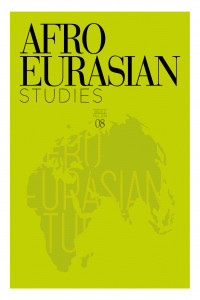Foreign Direct Investment and Private Sector External Financing: Do Credit Ratings Matter?
Foreign Direct Investment and Private Sector External Financing: Do Credit Ratings Matter?
This study investigates the relationship between inward foreign direct investment (FDI) and private sector external financing over the last decade with regard to 61 developing countries, 30 of them enjoying “investment” ratings and the remainder having “non – investment” ratings. Our analysis employing fixed effect two stage least squares (FE-2SLS) technique with simultaneousequation for panel data show that increasing private sector external financing negatively affects FDI between 1999 and 2010. Yet, private sector external financing is not directly affected by FDI. There is not a statistically significant relationship. Over the last decade, the private sector in developing countries has fulfilled its external financing demands without being greatly affected by any changes in FDI. These two findings verify the increasing credibility of developing countries, regardless of having non – investment credit rating
Keywords:
Foreign direct investment, private sector external financing, fixed effect two stage least squares (FE-2SLS) credit rating,
___
- Reinhart et al. (2003) presents a brief record of developing countries’ default history.
- Investors monitor the recipient country with their previous year’s realizations. So the lag values are influential in their decision – making process. In a similar fashion Reinhart et al. 2003, use the Institutional Investor (IIR) ratings, which are compiled twice a year, as a determinant of debt intolerance. The ratings grade each country on a scale going from zero to 100, with a rating of 100 given to countries which are perceived as having the lowest chance of defaulting on its government debt obligations. Hence, one may construct the variable 100 minus IIR as a proxy for default risk.
- See Guillen 2010, for the similar data used in their analysis investigating the determinants of successful re-access of developing countries to international capital markets.
- We have estimated the system by using FE-3SLS. We have also tested random effects both for two stage and three stage estimations. We have obtained roughly the same results and we report only the FE-2SLS results. The other results are available upon request. References Alfaro, L., A. Chandam, S. Kalemli-Özcan, and S. Sayek. (2004). “FDI and economic growth: The role of local financial markets.” Journal of International Economics, vol. , no. 1, pp. 89-112.
- Alfaro, L., S. Kalemli-Özcan, and V. Volosovych. (2008). “Why doesn’t capital flow from rich to poor countries? An empirical investigation.” The Review of Economics and Statistics, vol. 90, no. 2, pp. 347-368.
- Ali, F.A., N. Fless, and R. MacDonald. (2010). “Do institutions matter for foreign direct investment?” Open Economies Review, vol. 21, no. 2, pp. 201-219
- Aysan, A., Z. Ersoy, and M.A. Véganzonès–Varoudakis. (2007). “What types of perceived governance indicators matter the most for private investment in Middle East and North Africa.” Economics Bulletin, vol. 5, no. 8, pp. 1-16.
- Baltagi, B.H. (1981). “Simultaneous equations with error components.” Journal of
- Econometrics, vol. 17, no. 2, pp. 189-200. Bloningen, B.A. (2005). “A review of the empirical literature on FDI determinants”
- NBER Working Papers no. 11299.
- Busse, M., and C. Hefeker. (2007). “Political risk, institutions and foreign direct investment.” European Journal of Political Economy, vol. 23, no. 2, pp. 397-415.
- Edwards, S. (1991). “Capital flows, foreign direct investment, and debt-equity swaps in developing countries” In Capital Flows in the World Economy, H. Siebert (ed.), J.C.B. Mohr, Tubingen.
- Guillen, J. (2010). “Financial distress and access to capital in emerging markets.” Prague
- Economic Papers, no. 1, pp. 5-20. Gültekin-Karakaş, D., M. Hisarcıklılar, and H. Öztürk. (2011). “Sovereign risk ratings:
- Biased toward developed countries?” Emerging Markets Finance and Trade, vol. 47, no. 2, pp. 69–87. Hayakawa, K., F. Kimura, and L. Hyun-Hoon. (2011). “How does country risk matter for foreign direct investment.” IDE Discussion Paper Series no. 281
- Lane, P. (2004). “Empirical perspectives on long-term external debt” Topics in
- Macroeconomics, vol. 4, pp. 1-21. Lee, H.H., and R.S. Rajan. (2009). “Cross-border investment linkages among APEC economies: The case of foreign direct iinvestment.” APEC Secretariat.
- Lucas, R.E. (1990). “Why doesn’t capital flow from rich to poor countries?” American
- Economic Review, vol. 80, no. 2, pp. 92-96. OECD (2007). “Investment compact for south East Europe.” Report of Activities, Paris: France.
- Portes, R., and H. Rey. (2005). “The determinants of cross-border equity transaction flows.” Journal of International Economics, vol. 65, no. 2, pp. 269-296.
- Reinhart C.M., K.S. Rogoff, and M.A. Savastano. (2003). “Debt intolerance.” NBER Working Papers no. 9908.
- Taylor, M.P., and L. Sarno. (1997). “Capital flows to developing countries: Long- and short-term determinants.” World Bank Economic Review, vol. 11, no. 3, pp. 451-70.
- Wilson, D., K. Daly, C. Burgi, and S. Carlson. (2010). “Why doesn’t capital flow to where returns are high?” Global Economics Weekly, pp.10-41, Goldman Sachs Inc.
- Wei, S.J., and Y. Wu. (2002). “Negative alchemy? Corruption, composition of capital flows, and currency crises” In Preventing Currency Crises in Emerging Markets, S.
- ISSN: 2147-110X
- Yayın Aralığı: Yıllık
- Başlangıç: 2012
- Yayıncı: Musiad (Independent Industrialists and Businessmen's Association)
Sayıdaki Diğer Makaleler
Foreign Direct Investment and Private Sector External Financing: Do Credit Ratings Matter?
Education and Consumption Differentials: Evidence from an Emerging Country
The Narrow Pathway to A Sustainable Energy System
Determining Strategic R&D Sectors In Turkey: An Import-Based Approach
International Tourism and Economic Development in Turkey: A Vector Approach
Iran’s Changed Perception Concerning its Role in Afghanistan Following Soviet Disintegration
